At the start of the First World War in 1914, the British Army was arguably one of the most “modern” fighting forces in the world. Having learned from its experiences in a series of colonial wars, its soldiers were outfitted in khaki uniforms and armed with the Short-Magazine Lee-Enfield (SMLE) rifle, chambered for the .303 cartridge. It was among the powers that understood the potential of the machine gun, having adopted the Maxim water-cooled machine gun, which was refined as the Vickers machine gun.
However, when World War II broke out a generation later, the situation was very different.
In fact, the British Army was still employing the SMLE rifle, and many units still wore the same pattern uniforms and web gear as those who fought in the trenches on the Western Front. Most notably, while France, Germany and the Soviet Union — not to mention the United States — had adopted submachine guns, such was not the case with the British Army. [Read more about WW2 submachine guns.]
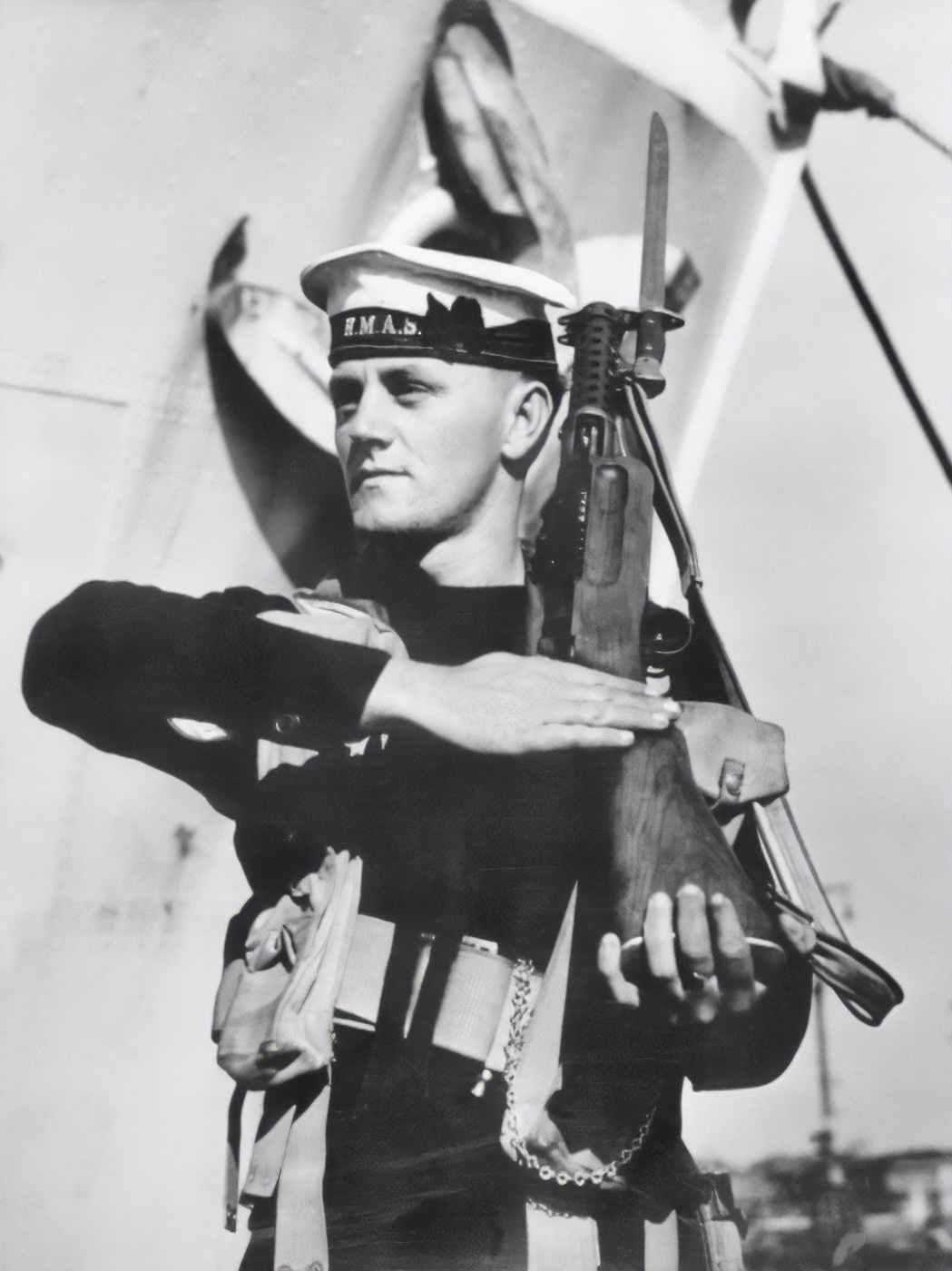
It was only after the fall of France in the spring of 1940 after the British were forced to evacuate from the Continent that development on such weapons began in earnest. Though it was the Sten SMG that was widely employed by the British Army, the Royal Navy adopted another SMG — one that was a more robust weapon, but also somewhat antiquated for the era.
Enter the Lanchester SMG
Following the “Miracle of Dunkirk,” which saw the evacuation of more than 338,000 Allied soldiers from the beaches and harbors of the coastal city of Dunkirk in the north of France in late May and early June 1940, the British Army was intact but poorly equipped as a fighting force.
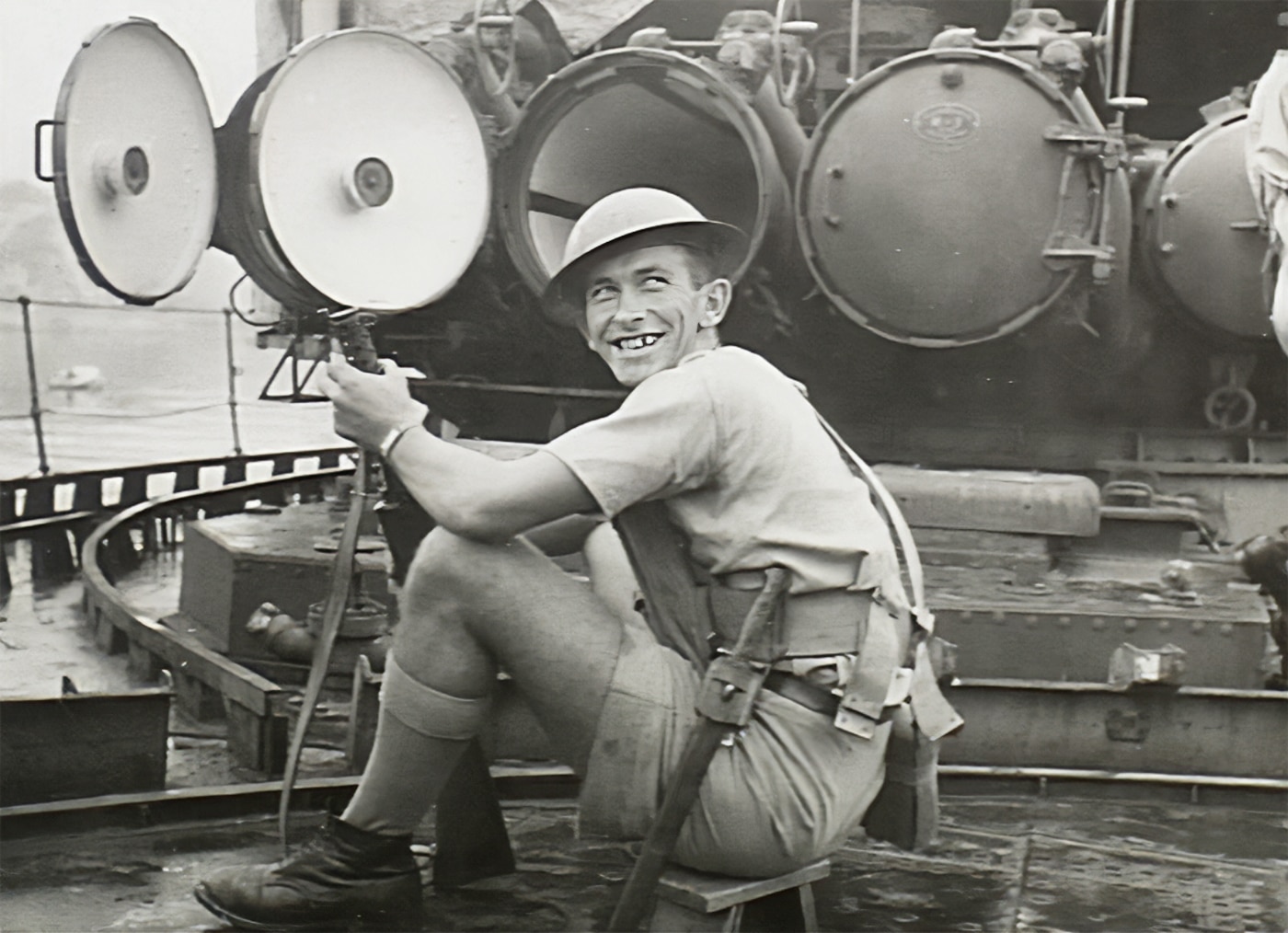
From experiences on the continent, it was determined that the development of a submachine gun was a pressing priority. The British sought to obtain Thompson Model 1928 SMG from the United States, however, the weapon was expensive — and many actually ended up at the bottom of the Atlantic Ocean in the cargo sunk by German U-Boats. Some sources have even suggested as many as 300,000 out of the 500,000 Thompson’s bought by Great Britain in the early stages of World War II may have been lost.
In August 1940, development began on what would become the Sten.
Though that weapon would gain fame and even infamy during the Second World War, and it remains known for its fairly crude yet reliable design, development already had begun on the Lanchester Mk I.

The Royal Air Force (RAF) had decided it required an SMG for its airfield defense, but after much discussion it was decided that the quickest solution would be to take an existing design and copy it. The RAF was soon joined by the British Admiralty in developing the new weapon; and the senior service went on to play a key role in its design.
A number of SMGs in service were considered, but the Bergmann MP-28/II won out, largely on the grounds that it was a simple and straightforward manufacturing proposition — but also because it was a German design. As the UK was at war with Germany, there would be no problems with licenses or patent infringement.
The MP-28/II was a modernized version of the MP-18/I; the submachine gun developed by noted German arms designer Hugo Schmeisser during the First World War. Several derivatives of the German SMG were already being produced, including models manufactured under license in Belgium and Spain. In addition, the French had studied the German design, which may have resulted in the development of the Ribeyrolles automatic carbine.
From the MP-28/II to the Lanchester
In the case of the UK, the SMG was slightly redesigned to suit British manufacturing methods — but there has been some confusion over who actually took the lead on the design. Some sources have noted that “George Stirling,” who was an engineer at the Lanchester Motor Company, oversaw the development, but that isn’t actually the case.
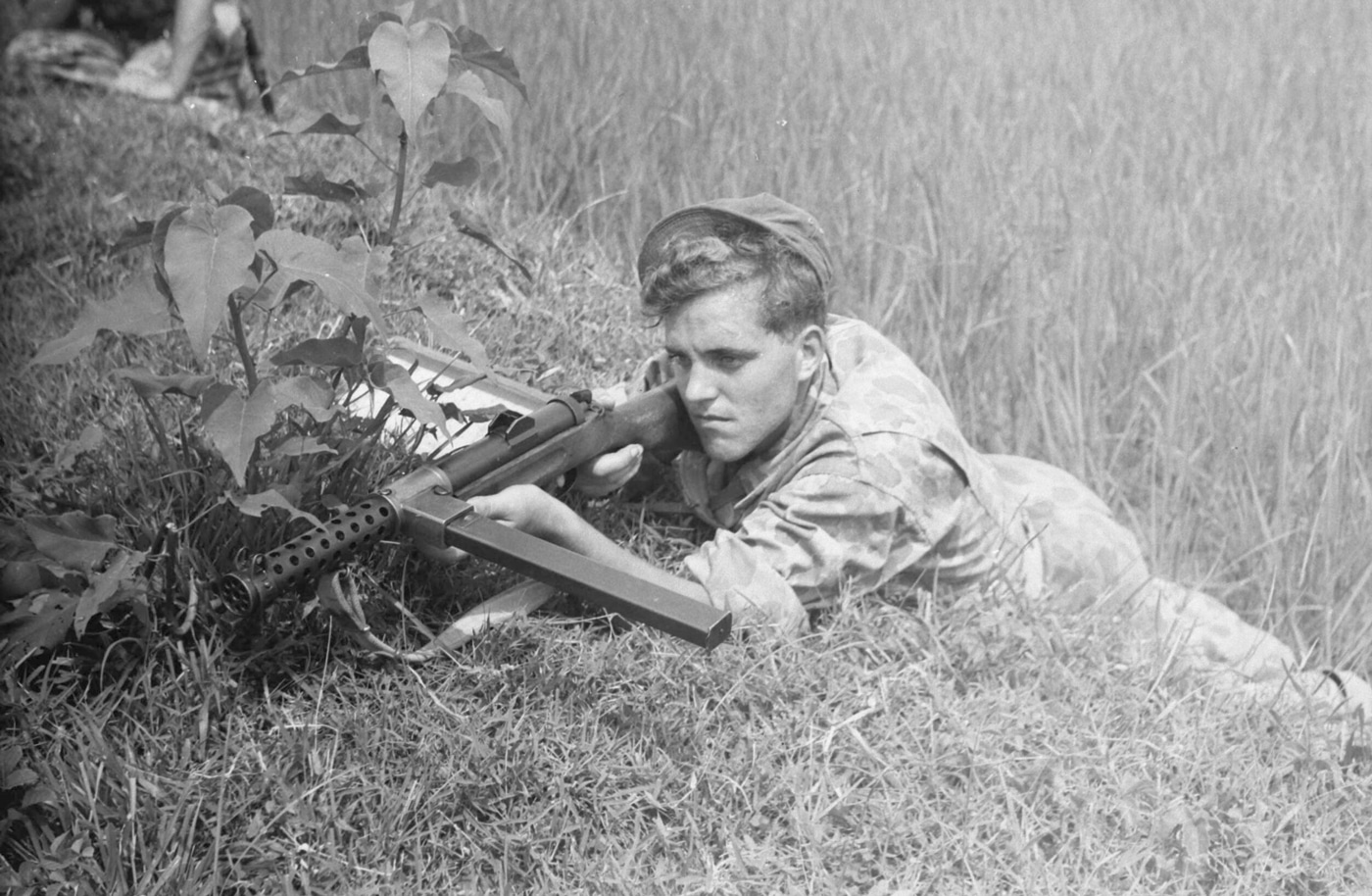
Rather, development was led by George Lanchester, who had founded the automobile firm with his brothers. He took charge of the SMG’s design while employed at the Sterling Armaments Company.
George Lanchester was given a pair of MP-28/IIs that the British military obtained via Addis Ababa, Ethiopia, which had been part of Italian East Africa, and liberated in 1940. The automobile engineer turned gunsmith redesigned the parts to match British dimensions, and it was subsequently designated the Lanchester MkI. One notable difference from the MP-28/II was in the magazine housing, which Lanchester chose to cast in bronze, following the lead of the Spanish-made models. That simplified the machine process, and also became one of the Lanchester’s defining features.
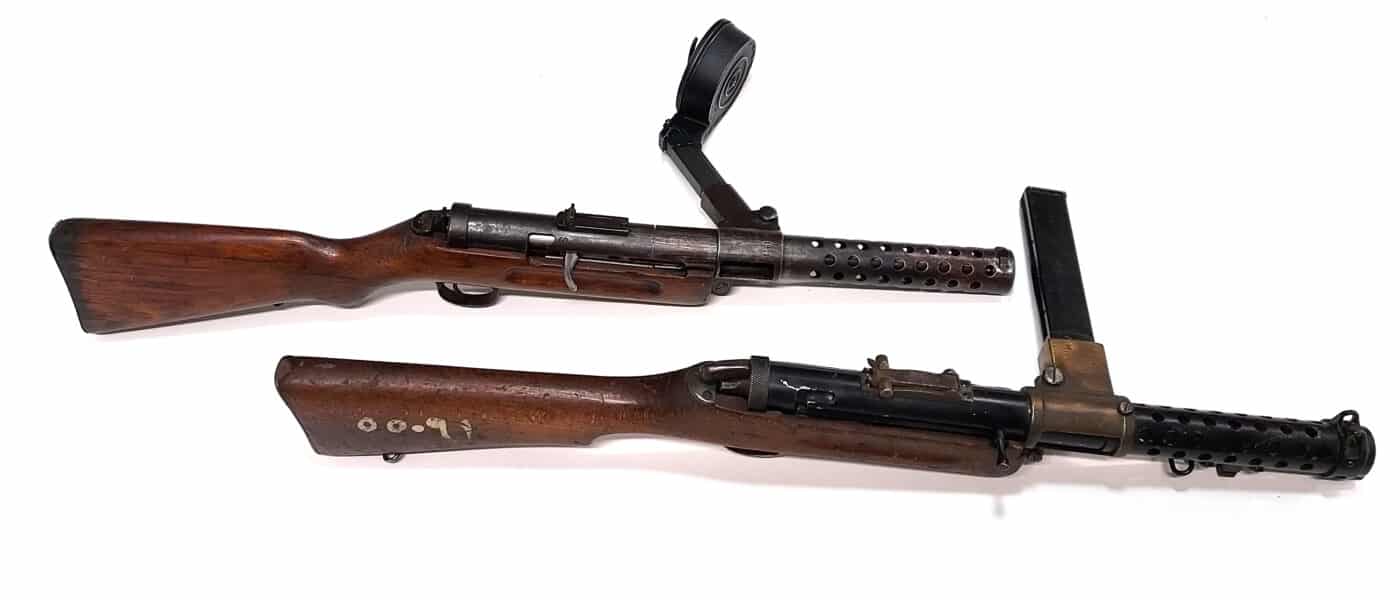
In addition, where the original MP-18/I utilized the stock of the Mauser KAR-98K bolt action rifle/carbine, the British Lanchester was outfitted with the stock from a SMLE. The other notable change was to the position of the fire mode selector, which was placed at front of the triggerguard.
After the design was finalized, the Sterling Armaments Company received an initial order for 50,000 of the SMGs, with most going to the Royal Navy — as it was determined by RAF leadership that there was less of a need for such firearms. The Lanchester MkI went on to see service with the Royal Canadian Navy and other Commonwealth navies throughout the Second World War and in the decades that followed, despite the fact that production ended in 1943.
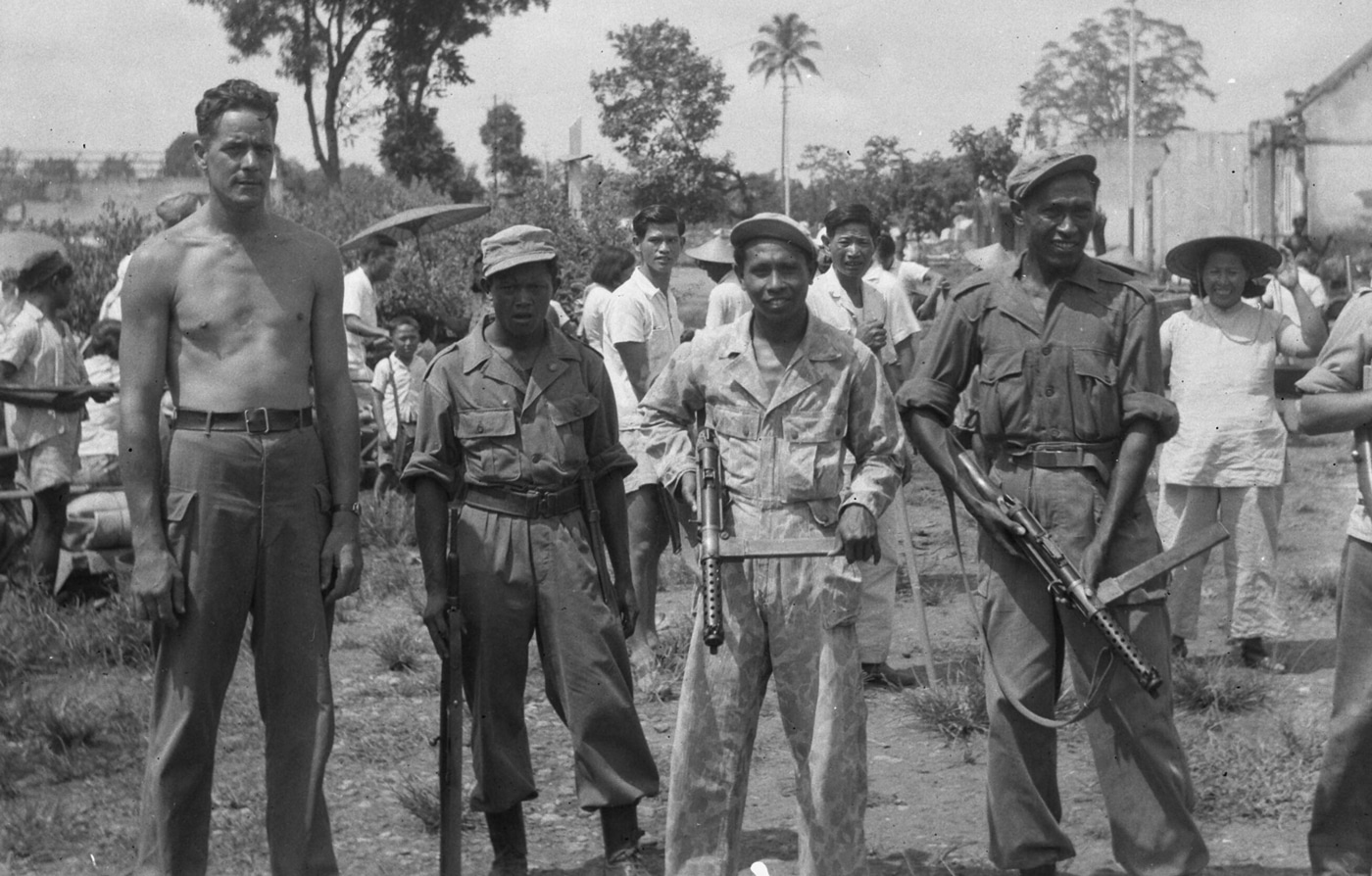
Though the Sten Gun was adopted in significantly larger numbers, the Lanchester actually remained in service for several decades after the war — with it only being retired from service in the 1970s.
A Simple Design — A Robust Weapon
As with the MP-18/I and MP-28/II on which it was based, the Lanchester was a self-loading blowback SMG that fired from an open-bolt. It offered select-fire on the early models, but the Lanchester MkI* omitted the fire mode selector, offering only full-automatic fire, while it featured a simplified sight.
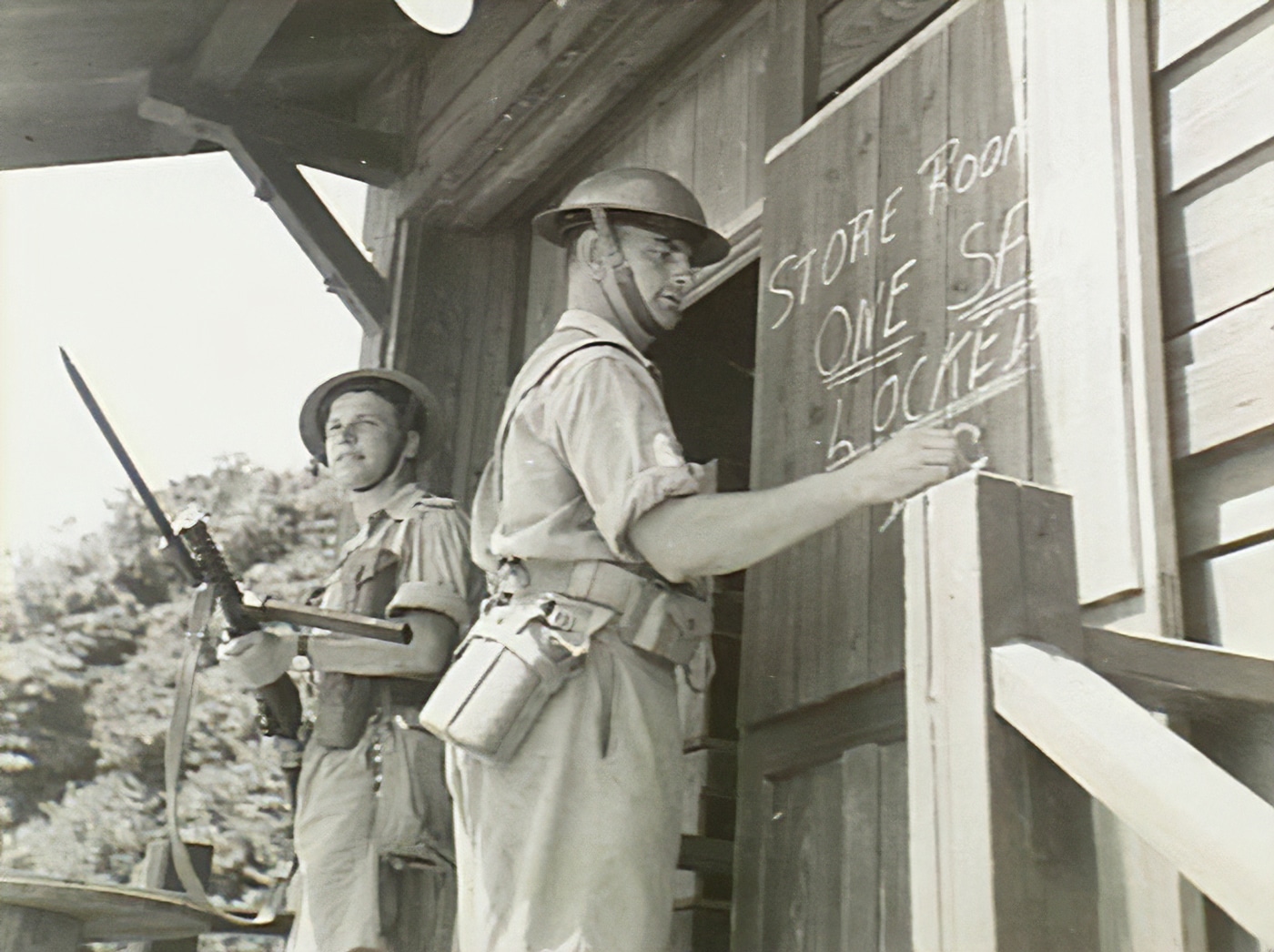
Like the Sten Gun, the Lanchester was also chambered for the 9x19mm Parabellum cartridge, so as to enable the use of captured German ammunition. Unlike the German SMGs (and most models of the Sten), it featured a bayonet lug centered on the muzzle that could be used with the Pattern 1907 sword bayonet.
It employed a straight 50-round magazine, while it was able to use the 32-round Sten magazine. The Lanchester had a rate of fire of 600 rounds per minute and effective firing range of 150 meters (490 feet).
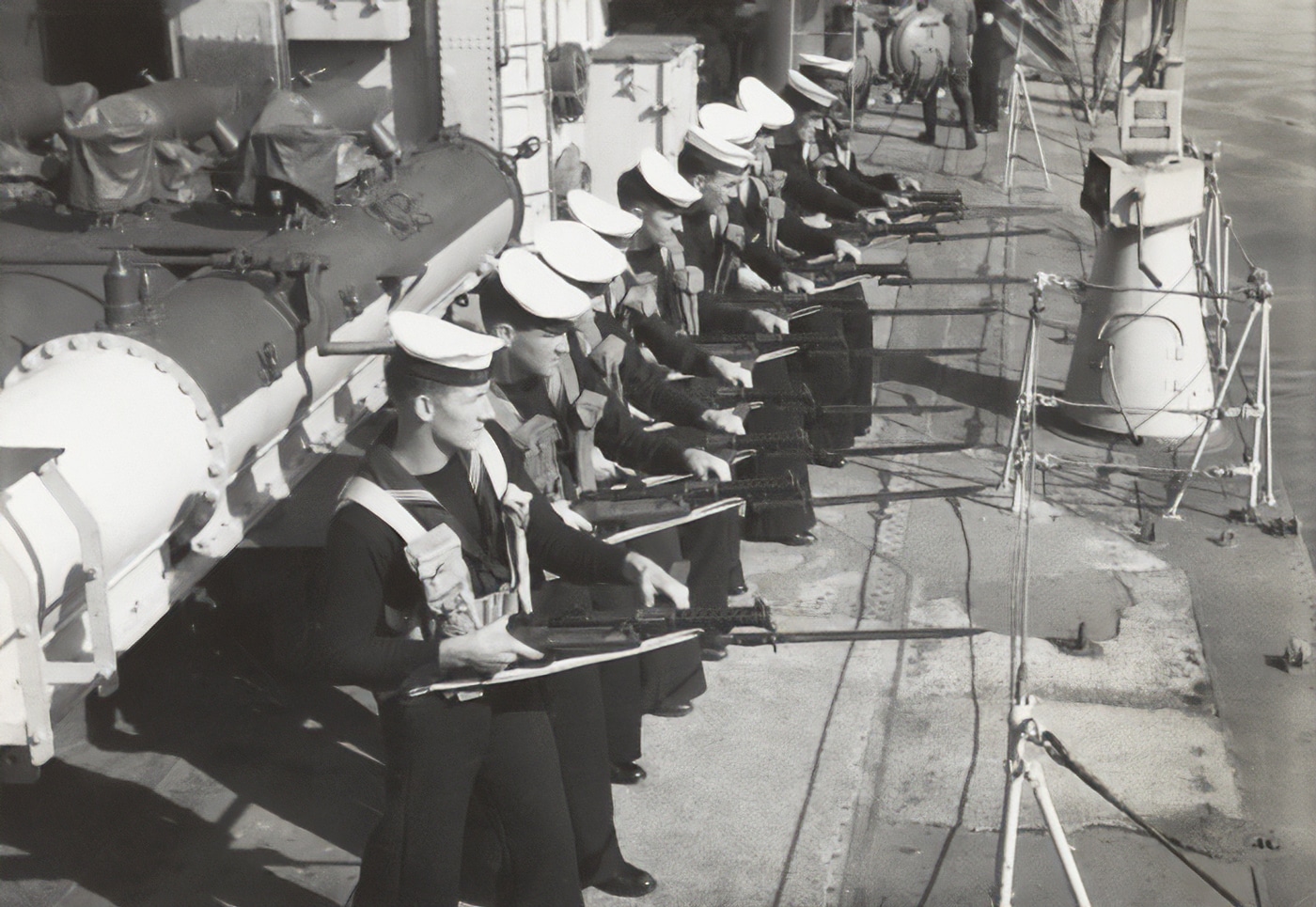
Sterling was the main producer of nearly 75,000 units, while the British firms of Greener and Boss each produced the weapon with far lower numbers, with the former manufacturing approximately 17,000 and the latter produced just under 4,000 in total. Most versions issued appeared to be the modified MkI*, and many MkIs were modified as well, which could explain why it wasn’t deemed the Mk 2. The latter version has earned the moniker “the star version” by collectors and historians.
Brief Service History of the Lanchester in Action
It is simply impossible now to determine exactly when the Lanchester was first used in combat, but it likely did see use in the major theaters of operation with the Royal Navy.
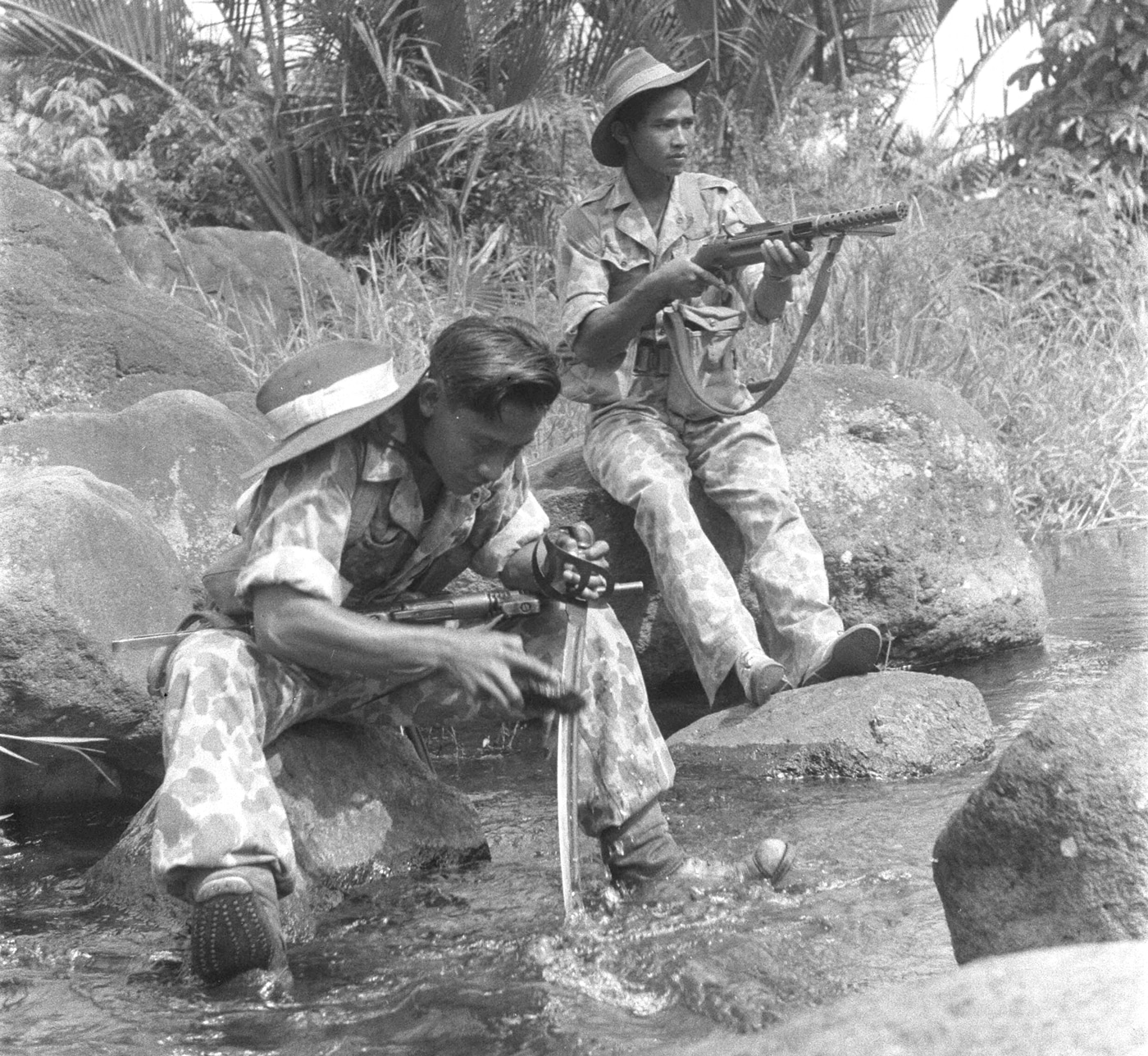
After the end of the Second World War, significant numbers of the SMGs were transferred with the Royal Navy warships acquired by Argentina, Chile and Egypt, while surplus weapons supplied to the Netherlands were used in the Indonesian National Revolution.
The submachine gun subsequently saw service during the Malayan Emergency, Mau Mau rebellion in British East Africa (Kenya), the Suez Crisis and the Rhodesian Bush War. The Dominican Republic also purchased a number of the weapons, which were used by the Constitutionalist forces in that nation’s civil war.
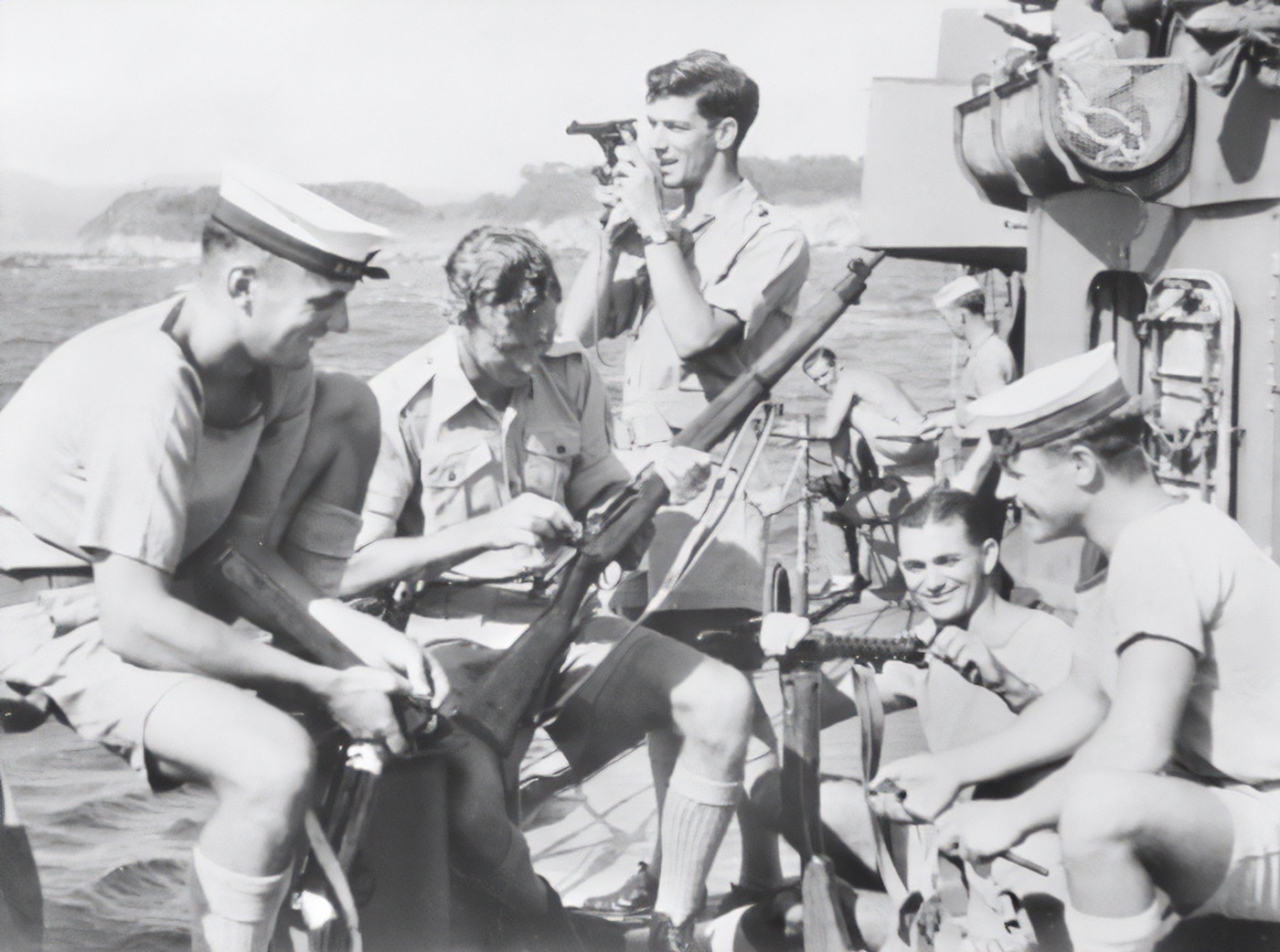
Though the Royal Navy retired its Lanchester SMGs in the 1970s, the Egyptian security forces continued to use it as late as the 1980s. There have also been reports that it was among the weapons employed by Hamas terrorists in Gaza, as well as in the October 7, 2023 Be’eri massacre.
The Lanchester in Pop Culture
The Lanchester MkI has had only a handful of appearances in movies and on TV. Yet, the first appearance of a Lanchester in a film was the 1955 movie Above Us the Waves, which chronicled the Royal Navy’s attempts to sink the German battleship Tirpitz. The weapon appears in several scenes where it doubled as the MP28/II, which was in fact used by German sailors. The Royal Navy had assisted with that film production and likely provided the SMGs from its arsenals.
The robust SMG was used in the 1984 adaptation of the book Nineteen Eight-Four, where it is seen in “newsreel” footage as carried by Oceania soldiers. More recently a Lanchester again doubled for a MP28/II in the Korean “western” styled film The Good, the Bad, the Weird — where various outlaws search for buried treasure in Japanese-occupied Manchuria in the 1930s.
Editor’s Note: Please be sure to check out The Armory Life Forum, where you can comment about our daily articles, as well as just talk guns and gear. Click the “Go To Forum Thread” link below to jump in and discuss this article and much more!
Read the full article here

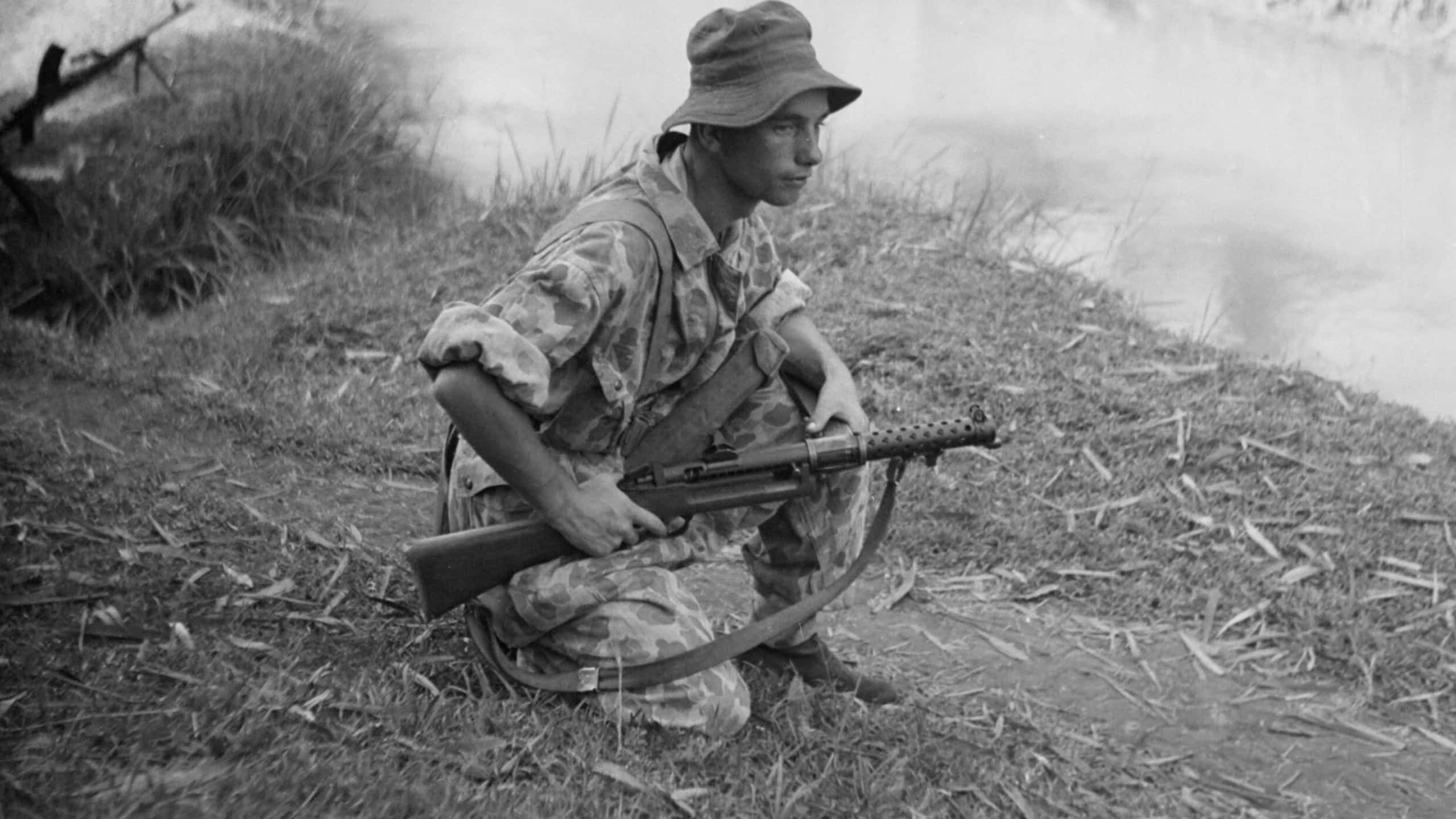
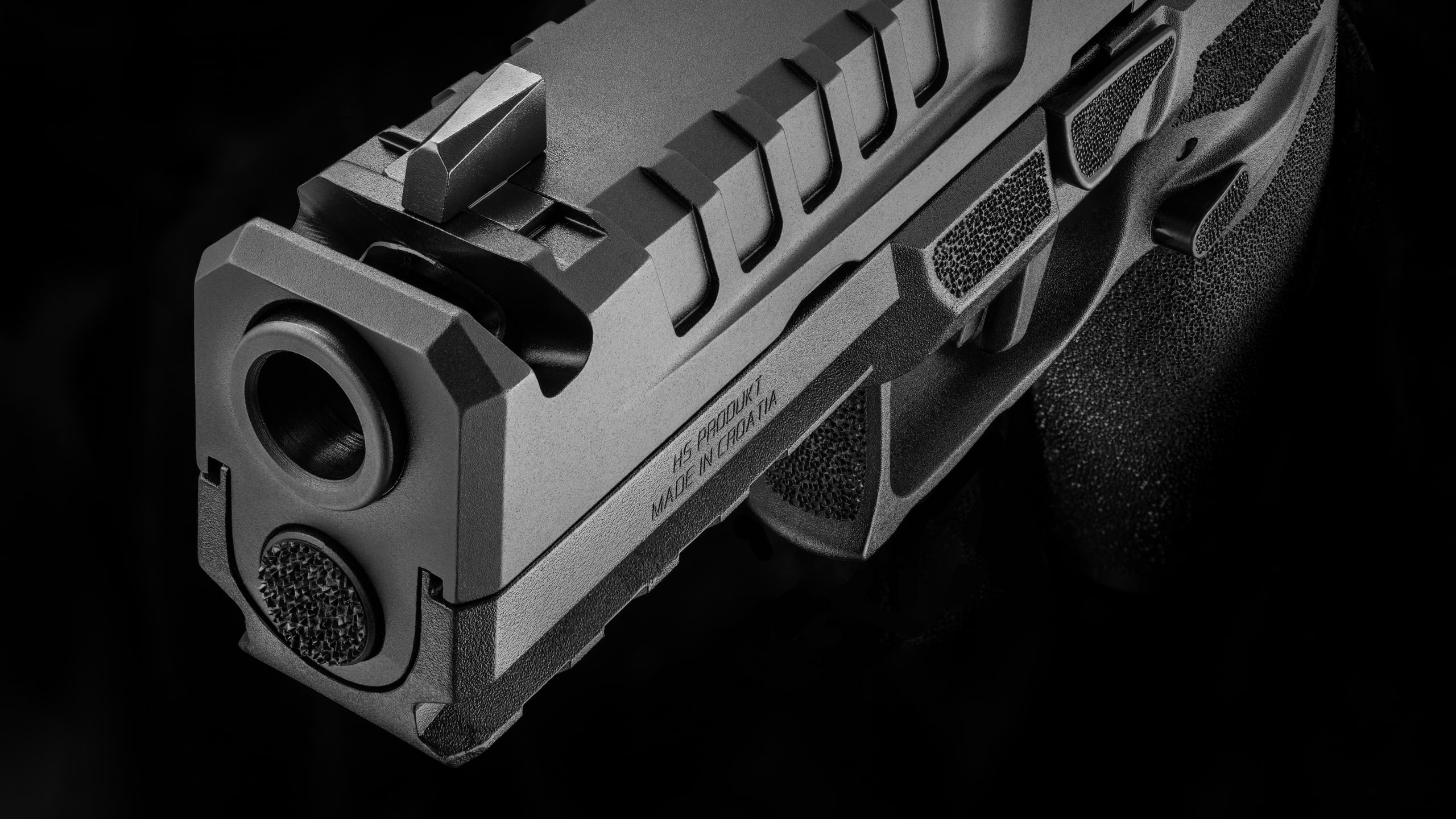


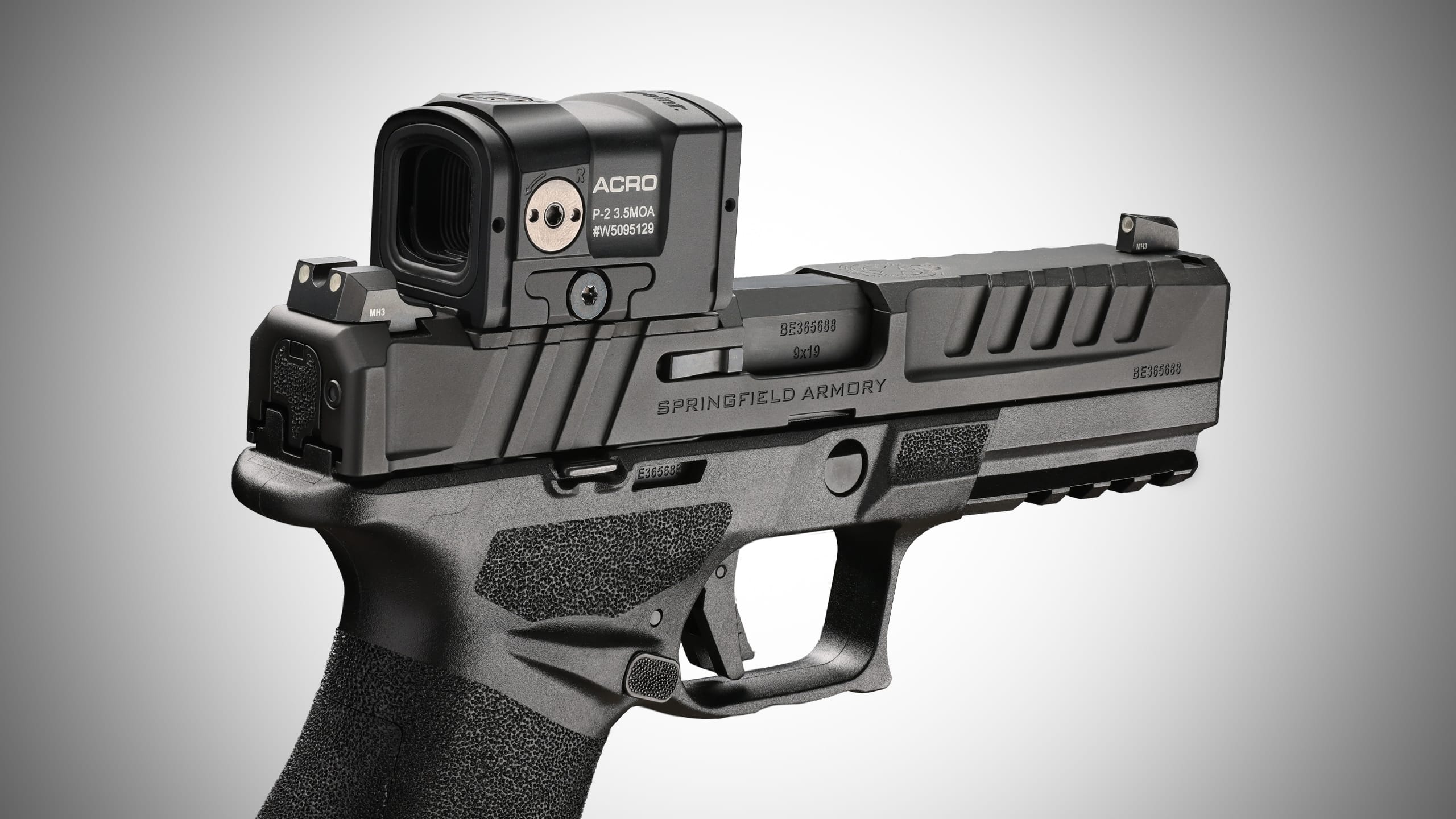


Leave a Reply